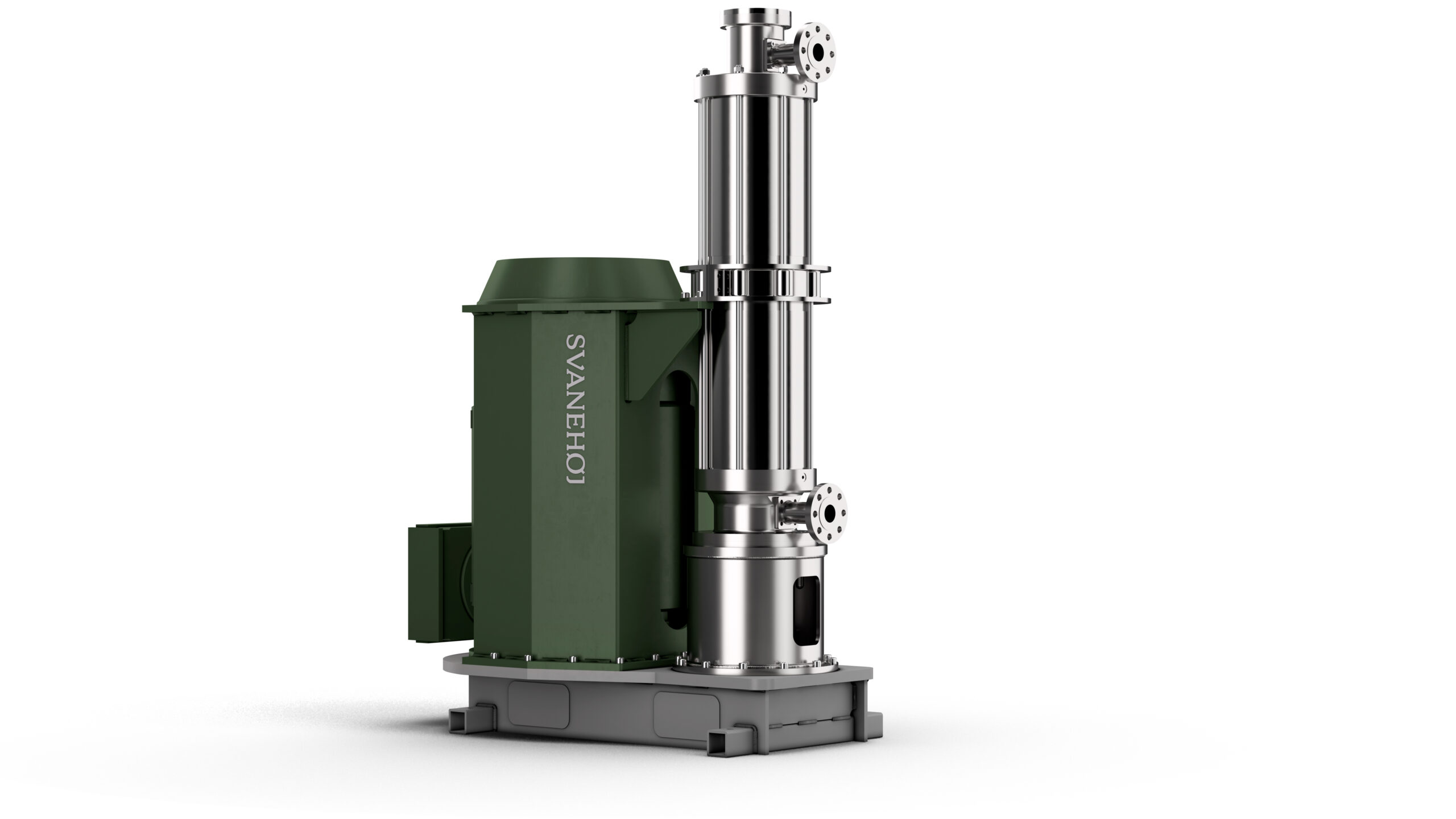Marine pump specialist Svanehøj is expanding its product portfolio for the emerging green ammonia market. This week at SMM in Hamburg, Germany, the company launches the world’s first high-pressure centrifugal pump for ammonia fuel applications.

A growing interest in alternative fuels for maritime transport is driving a surge in demand for specialized critical components capable of handling highly corrosive and toxic carbon-free liquids in a safe and efficient way.
Drawing on extensive experience in ammonia applications, Svanehøj has developed a dedicated high-pressure ammonia fuel pump capable of delivering a fuel injection pressure of up to 100 BAR. The compact solution, named “HP NH3 Booster Pump”, will be revealed at the SMM maritime exhibition in Hamburg, Germany, this week.
The new high-pressure pump is based on the design of Svanehøj’s patented deepwell low-pressure fuel pump, a centrifugal low-pressure pump, which has sold more than 1,000 units since its introduction, with 100 of those units being used for ammonia. The new pump has a small footprint of 2,100x780x1,450 mm, making it a perfect fit for the Tank Connection Space (TCS) in an ammonia fuel supply system.
“We have long been encouraged by customers and partners to develop a high-pressure ammonia pump of the same high standard as our low-pressure fuel pump. Early in the R&D process, we determined that our existing centrifugal pump design would be the optimal solution in terms of efficiency and maintenance. As a result, we have developed a pump with a design that already has a proven track record, and we are confident it will meet our customers’ high expectations,” said Johnny Houmann, Chief Sales Officer at Svanehøj.
Ensuring safe operation and maintenance
Because ammonia is highly toxic and corrosive, it is crucial for shipowners and fuel system suppliers to ensure that onboard operations and maintenance are as safe as on conventionally fueled vessels.
To meet the highest safety standards, Svanehøj introduces several innovative features. The HP NH3 Booster Pump is hermetically sealed with no mechanical shaft seals and designed with a magnetic coupling that ensures transmission of torque from the motor. The coupling containment shroud is made from magnesium-stabilized zirconium oxide, ensuring high temperature stability. For pumps installed in engine rooms or on deck, Svanehøj has added an optional fail-safe mechanism as a second barrier. In the unlikely event of a breach in the containment shroud, this mechanism will activate to contain the pumped media inside the coupling housing.
In terms of maintenance, the pump is fully drainable and can be lifted out in one piece. It is designed with only one media-lubricated and easily changeable ceramic ball bearing for all axial loads. For the power transmission, Svanehøj has a heavy-duty drive with a carbon-reinforced and easily accessible timing belt system.
“Although no commercial ships are operating on ammonia fuel yet, the maritime market has shown a growing appetite for investing in green ammonia solutions. Ammonia-fueled ship engines will be commercially available by 2025, and at Svanehøj, we are proud to support the energy transition of shipping by offering both low- and high-pressure pump solutions for the emerging green ammonia market”, said Johnny Houmann.
Svanehøj designs and manufactures specialized deepwell and submerged pumps for vital applications within fuel, cargo (gas, P&C), and offshore, as well as high-end tank gauging systems for LNG and LPG on vessels and land-based terminals. Svanehøj is also a leading full-scope provider of inspection, service, and calibration of cargo equipment on gas and P&C tankers.
Svanehøj’s mission is to help power a better future by offering solutions and services that support a rapid transition to renewable energy in the hard-to-abate sectors. At least 95% of Svanehøj’s R&D budget is invested in solutions for the energy transition. Its pump technology is compatible with all forms of liquid gas, including LNG, LPG, CO2, ammonia, and methanol.


